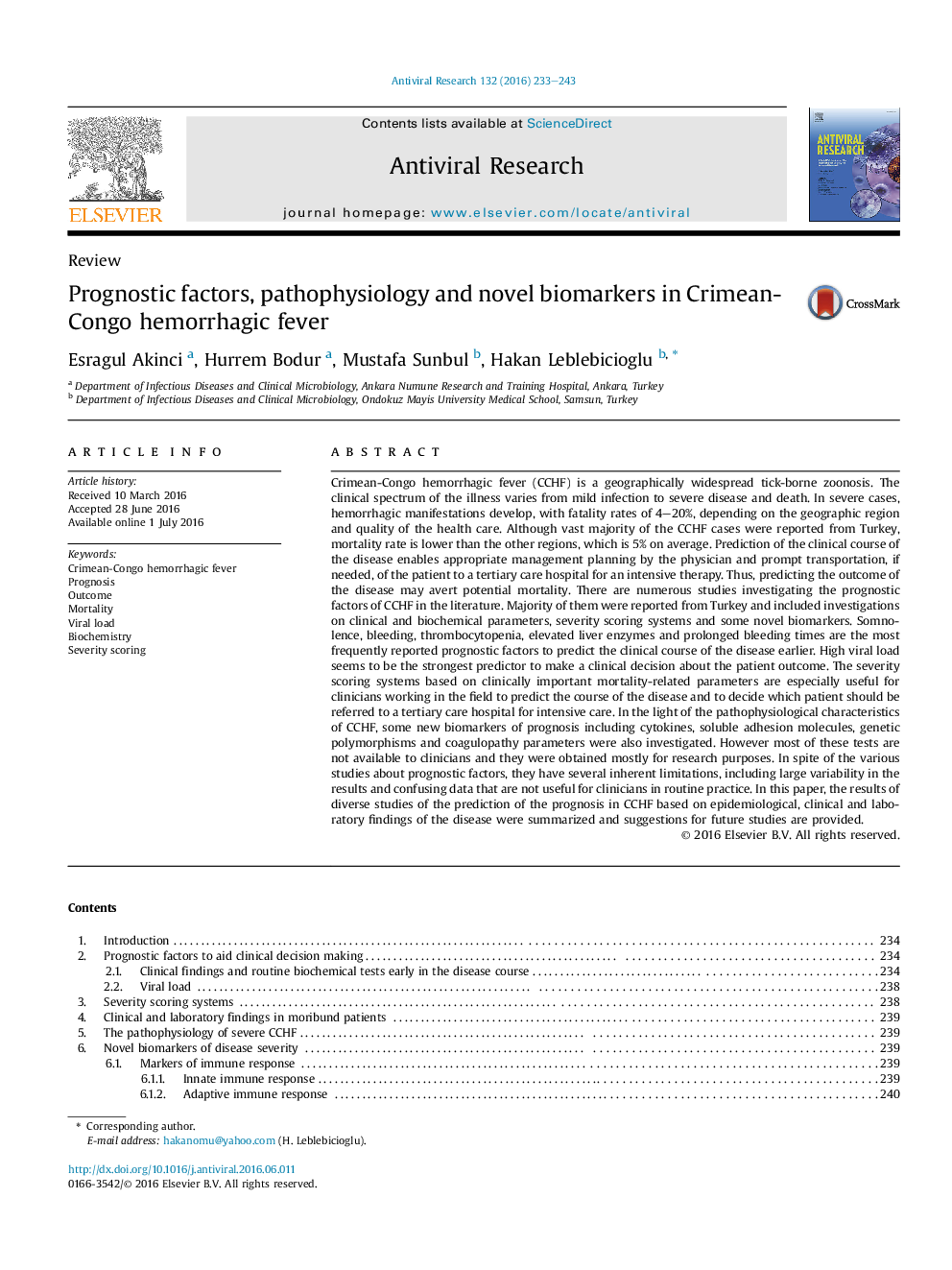| کد مقاله | کد نشریه | سال انتشار | مقاله انگلیسی | نسخه تمام متن |
|---|---|---|---|---|
| 5821634 | 1557811 | 2016 | 11 صفحه PDF | دانلود رایگان |
عنوان انگلیسی مقاله ISI
Prognostic factors, pathophysiology and novel biomarkers in Crimean-Congo hemorrhagic fever
ترجمه فارسی عنوان
عوامل پیش آگهی، پاتوفیزیولوژی و بیومارکرهای جدید در تب هموراژیک کریمه-کنگو
دانلود مقاله + سفارش ترجمه
دانلود مقاله ISI انگلیسی
رایگان برای ایرانیان
کلمات کلیدی
تب هموراژیک کریمه-کنگو، پیش بینی، نتیجه مرگ و میر بار ویروسی، بیوشیمی، نمره شدت،
موضوعات مرتبط
علوم زیستی و بیوفناوری
ایمنی شناسی و میکروب شناسی
ویروس شناسی
چکیده انگلیسی
Crimean-Congo hemorrhagic fever (CCHF) is a geographically widespread tick-borne zoonosis. The clinical spectrum of the illness varies from mild infection to severe disease and death. In severe cases, hemorrhagic manifestations develop, with fatality rates of 4-20%, depending on the geographic region and quality of the health care. Although vast majority of the CCHF cases were reported from Turkey, mortality rate is lower than the other regions, which is 5% on average. Prediction of the clinical course of the disease enables appropriate management planning by the physician and prompt transportation, if needed, of the patient to a tertiary care hospital for an intensive therapy. Thus, predicting the outcome of the disease may avert potential mortality. There are numerous studies investigating the prognostic factors of CCHF in the literature. Majority of them were reported from Turkey and included investigations on clinical and biochemical parameters, severity scoring systems and some novel biomarkers. Somnolence, bleeding, thrombocytopenia, elevated liver enzymes and prolonged bleeding times are the most frequently reported prognostic factors to predict the clinical course of the disease earlier. High viral load seems to be the strongest predictor to make a clinical decision about the patient outcome. The severity scoring systems based on clinically important mortality-related parameters are especially useful for clinicians working in the field to predict the course of the disease and to decide which patient should be referred to a tertiary care hospital for intensive care. In the light of the pathophysiological characteristics of CCHF, some new biomarkers of prognosis including cytokines, soluble adhesion molecules, genetic polymorphisms and coagulopathy parameters were also investigated. However most of these tests are not available to clinicians and they were obtained mostly for research purposes. In spite of the various studies about prognostic factors, they have several inherent limitations, including large variability in the results and confusing data that are not useful for clinicians in routine practice. In this paper, the results of diverse studies of the prediction of the prognosis in CCHF based on epidemiological, clinical and laboratory findings of the disease were summarized and suggestions for future studies are provided.
ناشر
Database: Elsevier - ScienceDirect (ساینس دایرکت)
Journal: Antiviral Research - Volume 132, August 2016, Pages 233-243
Journal: Antiviral Research - Volume 132, August 2016, Pages 233-243
نویسندگان
Esragul Akinci, Hurrem Bodur, Mustafa Sunbul, Hakan Leblebicioglu,
